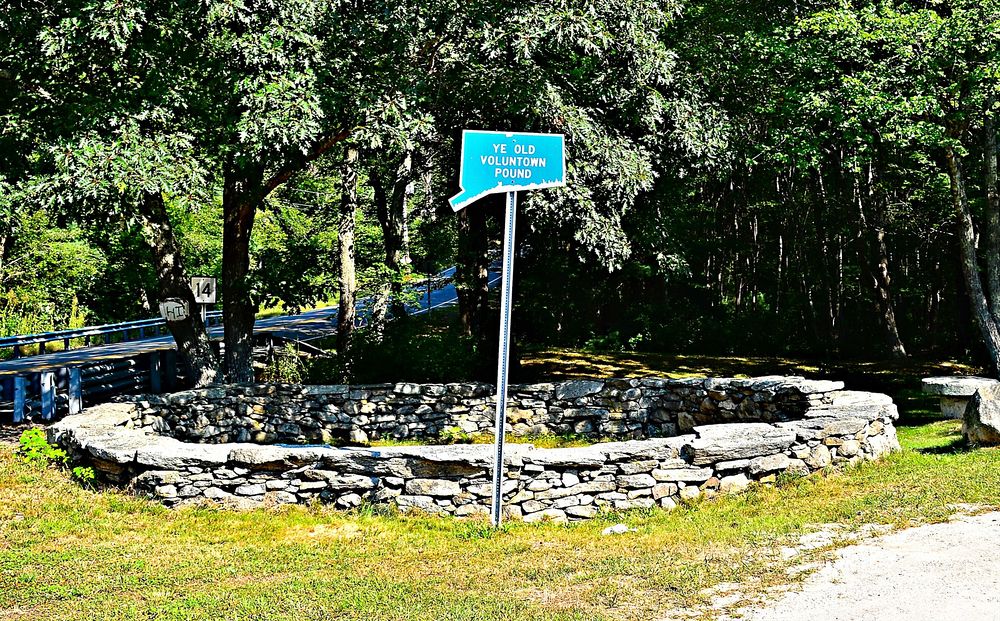Scattered across the English countryside and in many former British colonies, especially northeastern United States—an area historically known as New England—one can find small, rectangular areas bounded by stone walls with no visible structure inside. These are town pounds (or village pounds) where stray animals were imprisoned until they could be claimed by their owners. Like the village church, the pound was an indispensable part of mediaeval villages, especially in farming communities, where disputes inevitably arose when a neighbor’s livestock wandered into a person’s crops. The pound keeper would then impound the animals and the owner would have to pay a fine as well as compensation for whatever damage his animals had done.

The Olde Towne Pound in Hopkington, Massachusetts. Photo: neoc1/waymarking.com
Town pounds most likely began during medieval times and by the 16th century most villages and townships had one. They were typically built of stones to a low height and with an opening guarded by a wooden gate. The first pounds in New England were built in the early 1600's and were made of wood. They were gradually replaced by stone structures because they were sturdier.
In an article in Newmarket Times, George Griswold, the former president of the New Market Historical Society, wrote:
According to the records, the town Pound must have been an institution of much importance and one of the first to be established. A justice, three appraisers, town clerk and a lawyer and the town crier were necessary for it to function properly. The cost of the care and keep of the animal impounded, added to the fees of the above officials. This was truly an incentive for any man to keep his fences mended (I suspect that a little skulduggery went on here). Stray cattle were not tolerated in any New England community.
Town pounds served another purpose—when a farmer failed to pay his property tax, the town would take his livestock away and impound them at the town pound, holding them ransom until the tax was paid. If the owner failed to pay his taxes, the animals were taken to the market and sold.
Town pounds became obsolete in the late 19th century as common lands were divided and farmers began to pen their animals on private property. Most of what remains today date from the 16th and 17th centuries.

Ye Olde Voluntown Pound, in Sterling, Connecticut. Photo: nomadwillie/waymarking.com

Londonderry Town Pound, Londonderry, New Hampshire. Photo: Jimmy Emerson/Flickr

Westwood Town Pound in Westwood, Massachusetts. Photo: cache_test_dummies/waymarking.com












Comments
Post a Comment